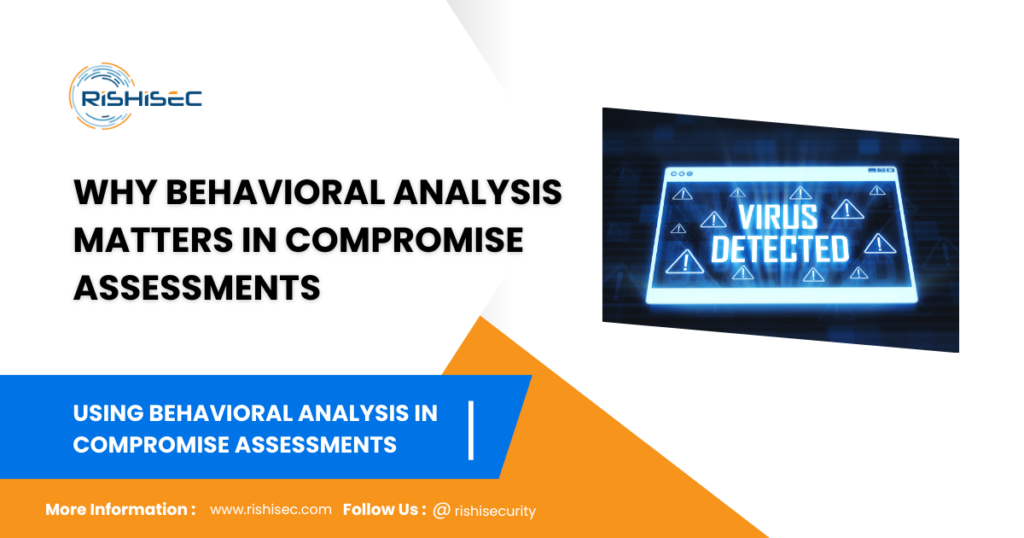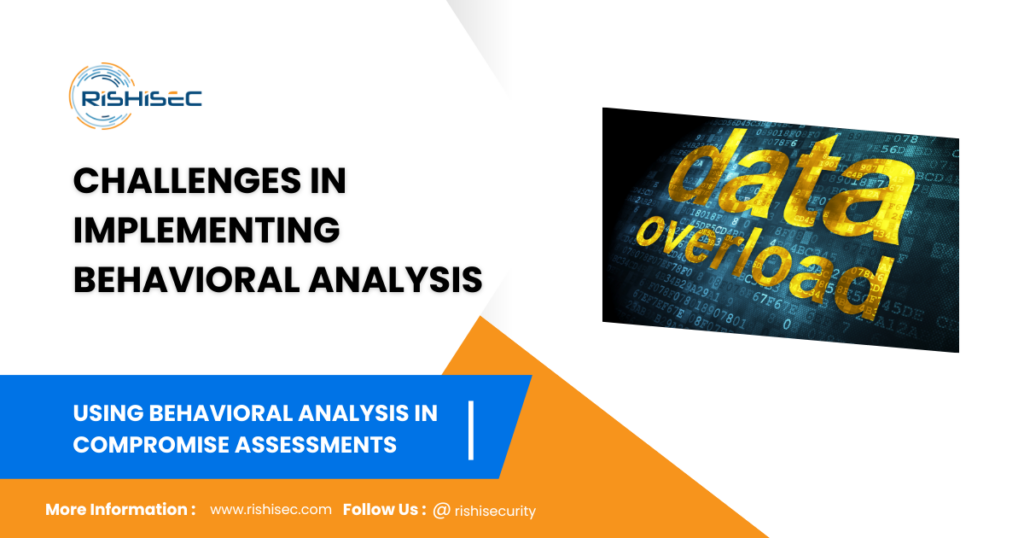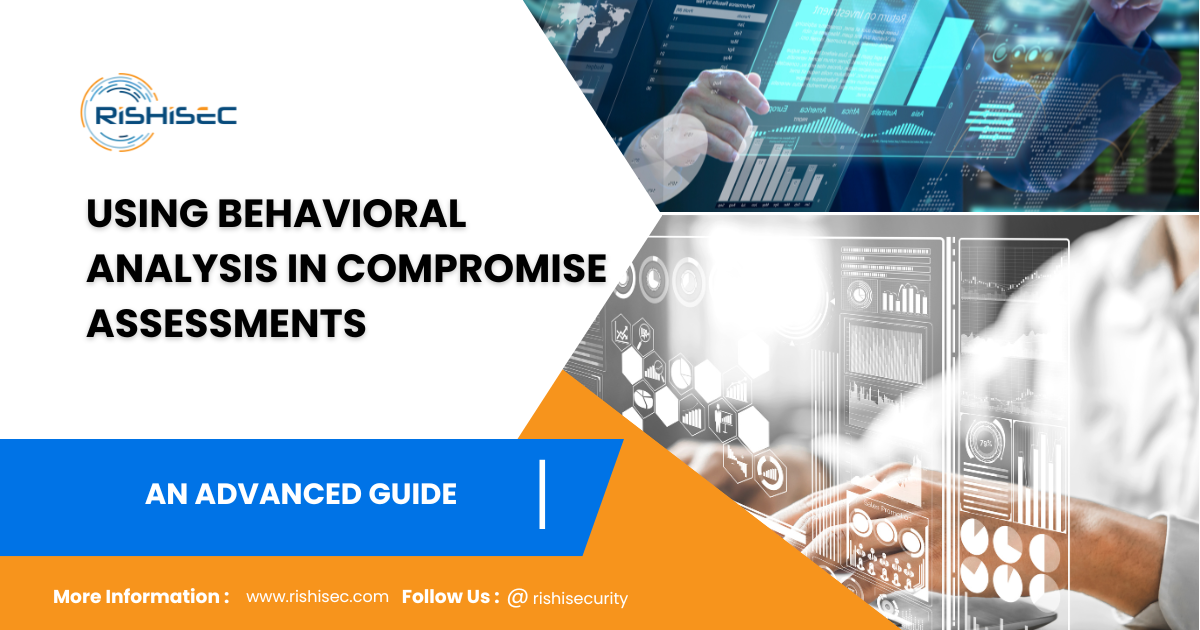Contents
- 1 Using Behavioral Analysis in Compromise Assessments
Using Behavioral Analysis in Compromise Assessments
Cyber security is no longer just about installing firewalls and antivirus software. With increasingly sophisticated attack vectors and evolving adversaries, organizations must be proactive rather than reactive. One such proactive measure is the use of behavioral analysis in compromise assessments. But what exactly does this entail, and how can it significantly enhance your organization’s security posture? This guide delves deep into the concept and application of behavioral analysis, and why it should be an integral part of every compromise assessment.
What is Behavioral Analysis in Cyber security?

Behavioral Analysis in Cybersecurity
At its core, behavioral analysis is a method of monitoring and assessing the actions of users, systems, and devices in real time to detect abnormalities. This approach hinges on identifying deviations from a baseline of expected or normal behavior. Instead of merely relying on signatures of known threats, behavioral analysis takes a proactive stance by continuously learning and adapting to changes within an environment.
By understanding what “normal” looks like for your systems and users, you can flag any anomalous activities that could indicate a potential breach. This is crucial, especially in the context of compromise assessments, where the goal is to detect and mitigate breaches before they result in significant damage.
Why Behavioral Analysis Matters in Compromise Assessments

Traditional security measures are reactive—they focus on known threats. Behavioral analysis, however, takes a more adaptive approach. It helps identify previously unknown or emerging threats by analyzing unusual patterns of behavior. Here’s why it’s essential in compromise assessments:
- Early Detection of Insider Threats
Many breaches originate from within an organization. Whether intentional or accidental, insiders can cause significant damage. Behavioral analysis helps detect unusual patterns such as unauthorized data access, repeated failed login attempts, or abnormal file transfers, signaling potential insider threats early. - Adaptive Threat Response
Unlike static security solutions, behavioral analysis evolves with your environment. It continually refines its understanding of normal behavior and adjusts its detection parameters. This adaptability is vital for recognizing threats that traditional signature-based solutions may miss. - Reduced False Positives
One of the most significant challenges in cyber security is the flood of false positives generated by traditional detection systems. By establishing a behavioral baseline, organizations can minimize false alarms and focus on genuine threats. This efficiency not only saves time but also improves response rates. - Comprehensive Threat Visibility
Behavioral analysis offers a holistic view of an organization’s network by monitoring all activities, whether on the endpoint, network, or cloud environments. This broad scope ensures that no suspicious behavior goes unnoticed.
Implementing Behavioral Analysis in Compromise Assessments
To effectively leverage behavioral analysis, organizations need to incorporate several key components into their cyber security strategy:
1. Baseline Creation and Continuous Monitoring
Establishing a baseline is the foundation of behavioral analysis. This baseline represents the normal activity within your systems. Once set, continuous monitoring allows for real-time analysis of deviations from this baseline. This is where AI and machine learning (ML) come into play—these technologies can analyze massive amounts of data, learn from it, and identify potential threats that would be impossible for human analysts to detect.
2. Integration with SIEM Systems
A Security Information and Event Management (SIEM) system is crucial for collating and analyzing security data from across the organization. When integrated with behavioral analysis tools, a SIEM can significantly enhance threat detection and response. By correlating behavioral anomalies with system logs, network traffic, and other data points, a SIEM provides context, helping security teams make informed decisions faster.
3. Threat Intelligence Feeds
While behavioral analysis excels at detecting unknown threats, incorporating threat intelligence feeds ensures that known threats are still identified. Combining both known and unknown threat detection methods provides a well-rounded approach to compromise assessments, maximizing protection.
4. Automated Response Systems
Speed is critical when dealing with cyber threats. Behavioral analysis can be paired with automated response systems to take immediate action when a potential threat is identified. This could mean isolating a device, blocking an IP address, or initiating a deeper forensic investigation—all in real-time.
Challenges in Implementing Behavioral Analysis

While the benefits of behavioral analysis are undeniable, it’s not without challenges. Organizations may face obstacles such as:
- Data Overload
Behavioral analysis systems can generate vast amounts of data, making it challenging to sift through and identify relevant information. Efficient data management and the use of AI/ML tools are crucial to overcoming this hurdle. - Skill Gaps
Implementing and maintaining behavioral analysis systems require skilled cyber security professionals who are adept at using advanced analytical tools. The cyber security skills gap is well-documented, and finding the right talent can be a challenge for many organizations. - Integration with Existing Systems
Behavioral analysis systems must be integrated with existing infrastructure, such as SIEM platforms, threat intelligence feeds, and automated response tools. This can be a complex and time-consuming process that requires careful planning and execution.
Best Practices for Success
To maximize the effectiveness of behavioral analysis in your compromise assessments, follow these best practices:
- Start with a Clear Plan
Before implementing behavioral analysis, outline clear objectives. What threats are you most concerned about? What systems are the most vulnerable? Defining these parameters will guide your analysis and ensure more focused monitoring. - Invest in the Right Tools
Choose tools that can scale with your organization’s needs. Look for solutions that offer integration with your existing security infrastructure, have robust AI/ML capabilities, and provide customizable threat detection parameters. - Train Your Team
Ensure your team is adequately trained in both using the tools and understanding the data they generate. This might require ongoing education and certifications, especially as threats evolve and new technologies emerge. - Continuous Review and Adaptation
Behavioral analysis is not a set-it-and-forget-it solution. It requires regular tuning and updates to ensure it’s catching the most relevant and current threats. Regularly review your baseline to adjust for changes in your environment and ensure your system is up-to-date with the latest threat intelligence.
Conclusion
Behavioral analysis is a game-changer for organizations serious about enhancing their compromise assessments. It provides deeper insights into user and system behavior, helping detect both known and unknown threats. While there are challenges in implementation, the benefits far outweigh the difficulties when executed correctly. Integrating behavioral analysis with broader security measures, such as SIEMs, threat intelligence, and automated response systems, will position your organization to stay one step ahead of potential breaches.
CTA
Ready to take your compromise assessments to the next level? SentryCA offers cutting-edge behavioral analysis tools that integrate seamlessly with your existing security infrastructure. Start a free trial today and see how our AI-driven solutions can help you detect, respond to, and prevent breaches before they impact your business. Tailored specifically for organizations looking to enhance their cyber security strategy, SentryCA ensures your defenses are always ahead of the curve.
Are you eager to learn more about Cyber Security, Advanced Techniques for Compromise Detection: Uncover Hidden Threats


